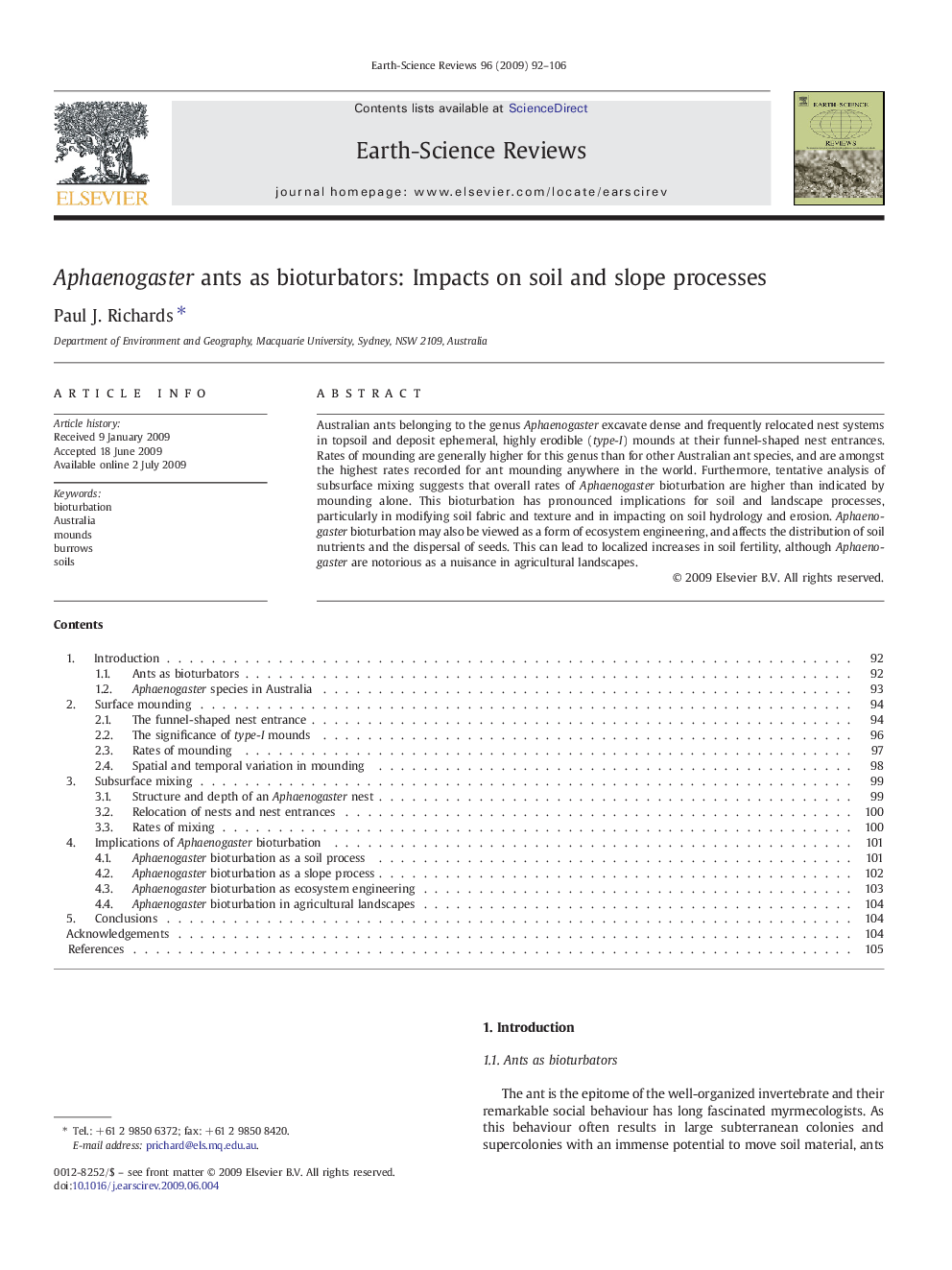| Article ID | Journal | Published Year | Pages | File Type |
|---|---|---|---|---|
| 4726176 | Earth-Science Reviews | 2009 | 15 Pages |
Australian ants belonging to the genus Aphaenogaster excavate dense and frequently relocated nest systems in topsoil and deposit ephemeral, highly erodible (type-I) mounds at their funnel-shaped nest entrances. Rates of mounding are generally higher for this genus than for other Australian ant species, and are amongst the highest rates recorded for ant mounding anywhere in the world. Furthermore, tentative analysis of subsurface mixing suggests that overall rates of Aphaenogaster bioturbation are higher than indicated by mounding alone. This bioturbation has pronounced implications for soil and landscape processes, particularly in modifying soil fabric and texture and in impacting on soil hydrology and erosion. Aphaenogaster bioturbation may also be viewed as a form of ecosystem engineering, and affects the distribution of soil nutrients and the dispersal of seeds. This can lead to localized increases in soil fertility, although Aphaenogaster are notorious as a nuisance in agricultural landscapes.
